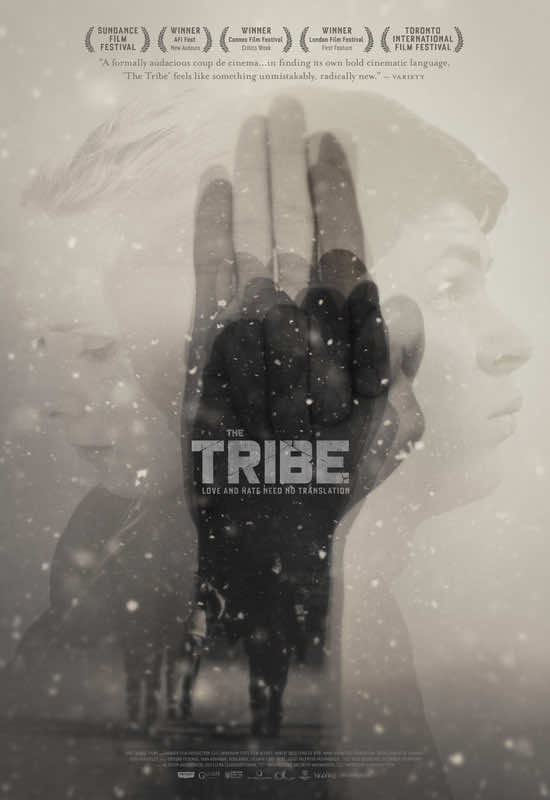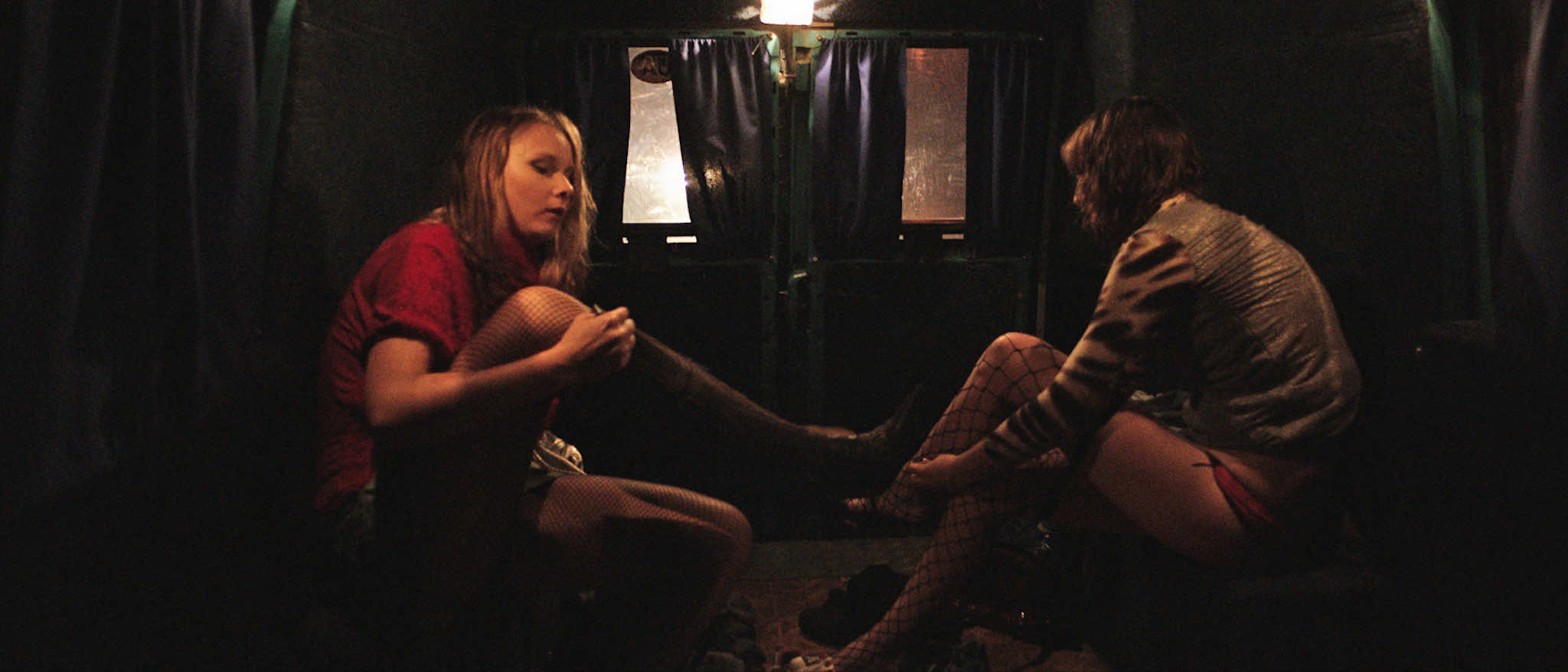 For all of its gimmicks — a Ukrainian film inspired by silent movies that eschews subtitles and features a cast of deaf characters — The Tribe (Plemya) is also something else: one of the most uncomfortably disturbing films you will probably see this year. It’s a challenging movie to sit through, not just because there is no dialogue for those who don’t know Ukrainian sign language, but because the notion of the distant objective camera (with no closeups) adopted from silent film presents such an unflinching gaze. The deaf teenagers writer/director Miroslav Slaboshpitsky follows are involved with the deaf mafia, a very real organization in the Ukraine with all the rules you might expect of organized crimes, and it’s brutal (read my interview with the director and actress in Miami New Times: Ukrainian Film The Tribe Explores the Little-Known World of the Deaf Mafia).
For all of its gimmicks — a Ukrainian film inspired by silent movies that eschews subtitles and features a cast of deaf characters — The Tribe (Plemya) is also something else: one of the most uncomfortably disturbing films you will probably see this year. It’s a challenging movie to sit through, not just because there is no dialogue for those who don’t know Ukrainian sign language, but because the notion of the distant objective camera (with no closeups) adopted from silent film presents such an unflinching gaze. The deaf teenagers writer/director Miroslav Slaboshpitsky follows are involved with the deaf mafia, a very real organization in the Ukraine with all the rules you might expect of organized crimes, and it’s brutal (read my interview with the director and actress in Miami New Times: Ukrainian Film The Tribe Explores the Little-Known World of the Deaf Mafia).
Grigoriy Fesenko plays the film’s lead, who we meet at a bus stop located across the street from the cameraman. In the wide shot, traffic whizzes by as he struggles to get directions from a woman to the deaf boarding school. The camera lingers so long, one can’t help but notice the rusted shell of a Trabant next to the bench, half buried by dead leaves, which speaks to the ills of post-Soviet Ukraine. The camera then follows him as he begins to walk to the school. This is a movie of long takes and distant camera. It’s a bold stylistic choice. While it often looks beautiful, it also often works to the film’s detriment.
There’s already a barrier between the audience and the characters due to the language and lack of translation. There’s a particularly frustrating scene that kills the flim’s momentum when the two female leads, who sneak out of the boarding school to moonlight as prostitutes, enter someone’s apartment surely higher up in the mafia. The characters sit around signing to one another for some time before the girls try on T-shirts advertising Italy. Only in the next scene, when the girls appear in line for a visa to Italy, does it become clear that they are to take a trip overseas to — most likely — peddle their bodies. It takes a long time before that becomes clear, and too often you’ll be thinking about running time in scenes like these.
But then there are the moments of extreme violence and raw sex acts between Fesenko’s character and one of the girls he pimps out and finds feelings for (Yana Novikova). It’s only worth noting these scenes not as spoilers but as fair warning about what you are getting into when you buy a ticket to The Tribe. You can expect some skull crushing violence, a backroom abortion that takes its time with every tool needed for the act and a sexual encounter where the two lovers 69 for sometime, where their slurping becomes a highlight for a largely voiceless movie. As Slaboshpitsky allows the camera to roll on and on … and on and on, you may find yourself tuning out of the narrative to grumble that you get the point.
Also, for all it’s stylishness, the distant camera makes it hard for the audience to feel anything for the characters, except for the primal difficulty of their most physical experiences. It works on that level, maybe too well. But it doesn’t work on a level of character development. It is a film about outsiders, after all, and this style stays true to that, but you need some intimacy to connect with these people if you want the audience to sit through the duration of this 132-minute movie and actually care about what happens to them. However, Novikova deserves special mention as the most expressive of the lot. From her emphatic signing to a rare moment where she must scream out, she is the film’s heart.
There’s no denying this will be a difficult film for most to sit through. The film’s violent finale takes into account deafness at a harrowing level, but some will wonder if it’s too gimmicky. Maybe I am a little mixed about this movie, but it’s not an exploitation film or some movie devised to be cruel to the audience, like that terrible movie Gaspar Noe concocted, Irreversible. The Tribe is a product of the Ukraine. Anyone who has ever visited (the only ones I know visited for research or educational purposes) can speak to the post-communist chill of the nation’s disillusioned people. The Ukraine has long struggled with a corrupt leadership that has left many disheartened citizens to struggle on their own. Now Russia wants the territory back and has used some of the most flagrantly violent means and deceits to do so. What of its underclass and handicapped? This is a country coming apart shred by shred by the hollow promises of the Soviet Empire, a specter that still looms over its empty present. Sure, Slaboshpitsky has shot an unblinking violent, perverse and often shocking movie but can you blame him?
The Tribe runs 132 minutes, is in Ukranian sign language without subtitles and is not rated (you’ve already been warned about content in the review). It opens in our South Florida area this Friday, July 24, at the Miami Beach Cinematheque and further north, in Broward County at the Cinema Paradiso Hollywood. It could already be playing in other locations across the U.S., if not coming soon. For other screening dates, visit this link and scroll down. The Miami Beach Cinematheque hosted a preview screening for the purpose of this review. All images are courtesy of Alamo Drafthouse. You can also read more of my conversation with Slaboshpitsky and Novikova in this post from a few days ago:











